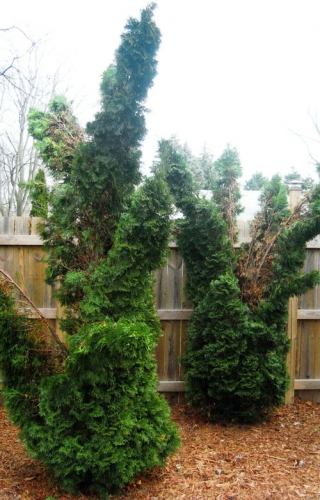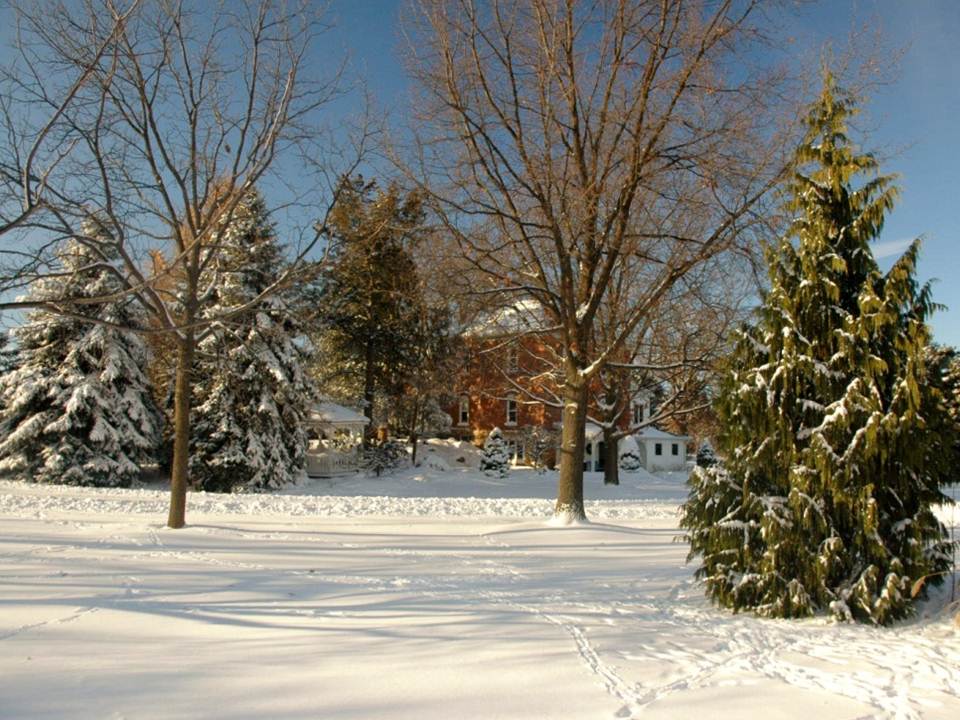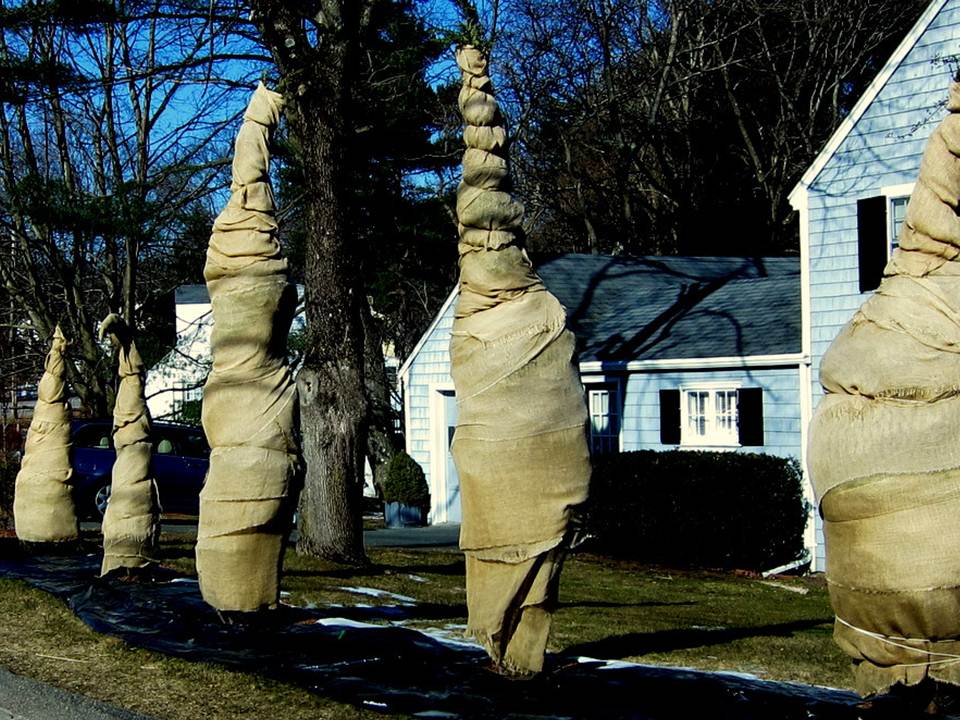We’ve had considerable discussion over on the FaceBook site concerning snow damage to columnar arborvitae. This is a common phenomenon resulting in a condition Holly has dubbed ‘splayage’.

The question, of course, is what to do about it? My standard response to addressing most problems related to winter injury is there are two options: selection and protection.
Selection means putting the right plant in the right place. For columnar arbs this means not planting them in areas prone to wet heavy snow. Here in mid-Michigan we get a wet snow about once every other year. Last winter we had a 10” of snow in Nov. 30 that resulted in a lot of tree breakage, including arbs. The problem is the branch structure of columnar cultivars such as ‘Holmstrup’ or ‘DeGroots spire’ cannot bear up to the snow weight. Remember these are cultivars that were specifically selected for their upright branch habit, this is not the natural branch pattern of the species (Thuju occidentalis or Thuja plicta depending on the cultivar). There are, however, some narrow trees that are adapted to sloughing off heavy snow. For example, most forms of Alaska false cypress (Cupressus nootkatensis) will do well under heavy snow loads. Also, weeping white spruce (Picea gluaca ‘Pendula’) is a good narrow conifer for snowy locations.

Alaska falsecypress (right) is adapted to heavy snow. Notice how snow hangs on other conifers on the left.
But what do you do if you already have a row of columnar arbs and you live in an area prone to heavy snow? Protecting trees from bending over by tying up the upper 1/3 is often the only reliable option. Note that the all ties or wrap need to be removed in the spring. Yes, it’s a lot of work. Makes the ‘right tree right place’ thing sound better. Note that you only need to provide enough support to keep the branches together, you don’t need to wrap the entire tree like a mummy.

I want my mummy… Does this work? Probably. Question is do you want to look at it all winter?
What about repairing damage after trees have splayed? Some arborists I’ve talked to about this problem have had success tying up tops after the fact provided the trees are tied before any new growth occurs and the branches are bent, not broken. It is important to remember that this is similar to situation with standing and guying up trees after a windthrow event. Yes, you can stand the tree back up but how are you going to stop it from happening again? In the case of splayage, you’re into a cycle of tying or wrapping every year.
Thanks for thi
s post, which leads to a question: I planted an Eastern red cedar (Juniperus virginiana) last summer from a 5×8 seedling pot. Currently between 2-3′ high. The planting site is subject to drifting snow (and an obnoxious neighbor who snowblows over a fence). I’ve been digging the seedling out of the snow to free the branches and let the needles get sun and air, but I’m curious to know whether this is necessary? Would a small tree like this normally be sheltered by larger trees around it in a stand of cedar? Or are small trees just able to take being buried in snowdrifts?
I have a customer that suffered snow damage. I ended up pruning out some of the worst damage. I tried to stake but after a couple of years some of the trunks died due to unseen damage that caused the trunk to rot at the area I tied. This was a screen the business owner was told to him in as a requirement of his zoning permit. The space didn’t leave many options for other plant material that met the needed requirements or his budget.
Well, I live in northern BC, Canada, and we always have snow, so we just tie up our arborvitae each fall. I don’t wrap with burlap, just make sure the plants are bound together to hold the snow weight.
We also have enough snow that our small shrubs and evergreens are underneath the snow cover for most of the winter without damage. I do set up a teepee of bamboo sticks over shrubs that may be impacted by snow shovelling just to break the lumps as they land on the beds. It may be a futile effort, but I like to think it helps along my sidewalks!
firefly: I suspect the plants would be fine if you just left them buried. Lots of of plants over-winter this way in nature. Visit Mount Rainier in winter where they get up to 1200″ of snow.
HeidiPG: I agree the burlap warp is probably overkill in most cases. Around here the main benefit of the complete mummy-wrap is preventing browse damage since arbs are like candy to our local deer.